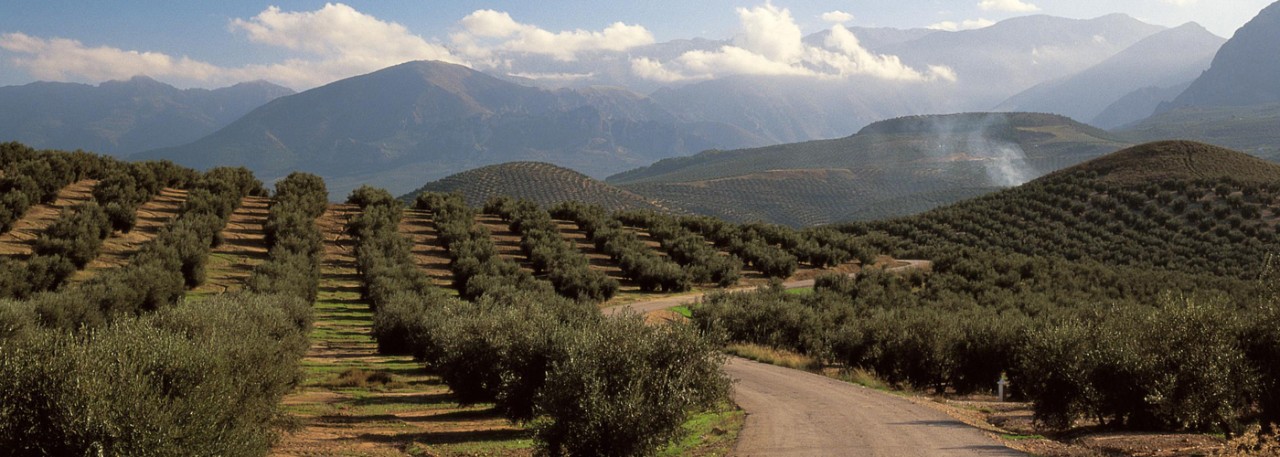.png.transform/rendition-xs/image_image%20(1).png)
Sierra Mágina PDO
Extra virgin olive oil obtained from the fruit of olive trees (Olea europea, L), mainly of the Picual variety, but also Manzanillo de Jaén, by mechanical and other physical means that do not alter the oil in any way, preserving the flavor, aroma and characteristics of the fruit of origin.
Tasting notes
These are highly stable oils, very fruity and slightly bitter, with aromas suggestive of figs and tomatoes. Their color varies from deep green to golden yellow depending on when the olives were harvested and their geographical provenance within PDO area.
Other notes
Analytical data:
- Acidity: maximum 0.5º
- Moisture: maximum 0.1%
- Peroxide value: maximum 18
- Impurities maximum: 0.1%
- K 270: less than 0.20
Production / Processing method
Plantation density in this area’s olive groves is generally 90 to 120 trees per hectare (2.5 acres), with slight variations in some holdings. Farming methods vary, the land being left untilled in areas where the landscape is more accidented, and traditionally tilled, or partially so, in areas where the slopes are less steep and there is less risk of losing the cultivable layer of soil.
The olives used are required to have been grown within the designated area of Sierra Mágina and to be transported to the mill within 24 hours of harvesting to avoid deterioration and to preserve their quality. On arrival at the mill, the olives are cleaned and classified by category, and then immediately ground. Extraction must take place at a moderate temperature to obtain a top quality extra virgin oil. After extraction, the oil is stored in stainless steel tanks in controlled heat and light conditions, and is later packaged in authorized receptacles. Some areas have an early harvest, starting in October, and others remain productive as late as March.
Geography / Relief and climate
The Mágina is not so much a sierra (in the sense of a jagged ridge) as a mountainous massif, that includes the highest peaks in the province, such as Pico Mágina at 2.167 m. (7,109 ft) and the peaks of Almadén and Cárceles, both also over 2.000 m (6,561 ft). The massif’s dramatic landscape, which includes Sierra Mágina Natural Park, contrast s starkly with the adjacent areas of gentler landscape, occupied by olive groves.
Given these geographical differences, the area’s climate does not conform to one particular type, but ranges from subtropical Mediterranean to temperate Mediterranean. The average annual temperature is between 13 and 17º C (55.4 – 62.6º F) and average rainfall ranges between 400 and 800 mm (15.74 - 31.49 in), mostly occurring in winter.
Sierra Mágina’s river system makes it possible to sustain large irrigated areas: the system is radial in structure and belongs entirely to the drainage basin of the River Guadalquivir, from which all other rivers and creeks that drain into it originate.
Regulatory Council
Consejo Regulador de la DOP Sierra Mágina
Ctra. Mancha Real-Cazorla, s/n
23537 Bedmar (Jaén)
Tel: (+34) 953 772 090
denominacion@sierramagina.org
www.sierramagina.org
Sources:
- Spanish Ministry of Agriculture
The Mágina is not so much a sierra as a mountainous massif, that includes the highest peak in the province: Pico Mágina at 2.167 m. (7,109 ft).


- Sierra Mágina 1
- Sierra Mágina 2
